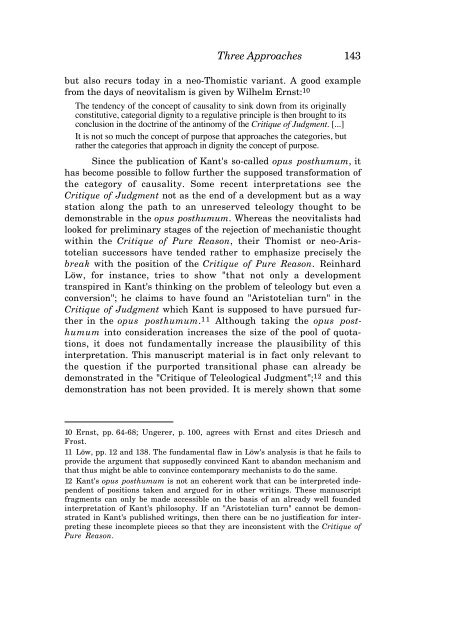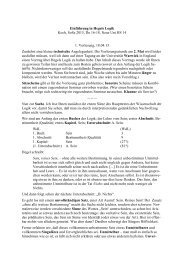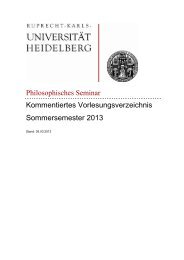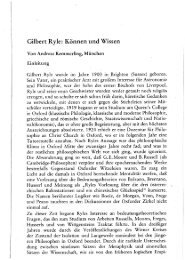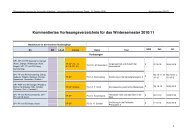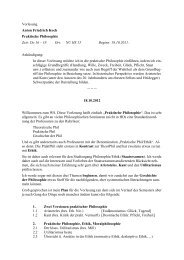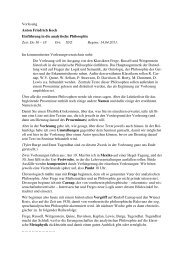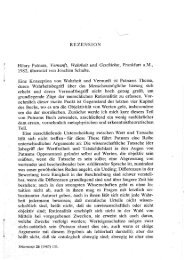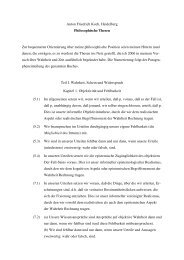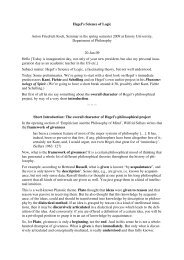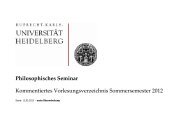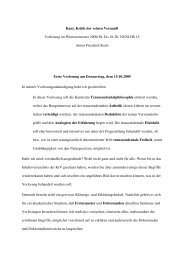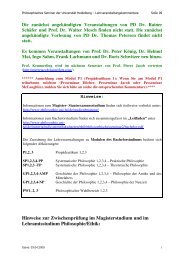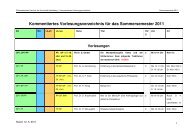KANT'S CRITIQUE OF TELEOLOGY IN BIOLOGICAL EXPLANATION
KANT'S CRITIQUE OF TELEOLOGY IN BIOLOGICAL EXPLANATION
KANT'S CRITIQUE OF TELEOLOGY IN BIOLOGICAL EXPLANATION
Create successful ePaper yourself
Turn your PDF publications into a flip-book with our unique Google optimized e-Paper software.
Three Approaches 143<br />
but also recurs today in a neo-Thomistic variant. A good example<br />
from the days of neovitalism is given by Wilhelm Ernst: 10<br />
The tendency of the concept of causality to sink down from its originally<br />
constitutive, categorial dignity to a regulative principle is then brought to its<br />
conclusion in the doctrine of the antinomy of the Critique of Judgment. [...]<br />
It is not so much the concept of purpose that approaches the categories, but<br />
rather the categories that approach in dignity the concept of purpose.<br />
Since the publication of Kant's so-called opus posthumum, it<br />
has become possible to follow further the supposed transformation of<br />
the category of causality. Some recent interpretations see the<br />
Critique of Judgment not as the end of a development but as a way<br />
station along the path to an unreserved teleology thought to be<br />
demonstrable in the opus posthumum. Whereas the neovitalists had<br />
looked for preliminary stages of the rejection of mechanistic thought<br />
within the Critique of Pure Reason, their Thomist or neo-Aristotelian<br />
successors have tended rather to emphasize precisely the<br />
break with the position of the Critique of Pure Reason. Reinhard<br />
Löw, for instance, tries to show "that not only a development<br />
transpired in Kant's thinking on the problem of teleology but even a<br />
conversion"; he claims to have found an "Aristotelian turn" in the<br />
Critique of Judgment which Kant is supposed to have pursued further<br />
in the opus posthumum. 1 1 Although taking the opus posthumum<br />
into consideration increases the size of the pool of quotations,<br />
it does not fundamentally increase the plausibility of this<br />
interpretation. This manuscript material is in fact only relevant to<br />
the question if the purported transitional phase can already be<br />
demonstrated in the "Critique of Teleological Judgment"; 12 and this<br />
demonstration has not been provided. It is merely shown that some<br />
10 Ernst, pp. 64-68; Ungerer, p. 100, agrees with Ernst and cites Driesch and<br />
Frost.<br />
11 Löw, pp. 12 and 138. The fundamental flaw in Löw's analysis is that he fails to<br />
provide the argument that supposedly convinced Kant to abandon mechanism and<br />
that thus might be able to convince contemporary mechanists to do the same.<br />
12 Kant's opus posthumum is not an coherent work that can be interpreted independent<br />
of positions taken and argued for in other writings. These manuscript<br />
fragments can only be made accessible on the basis of an already well founded<br />
interpretation of Kant's philosophy. If an "Aristotelian turn" cannot be demonstrated<br />
in Kant's published writings, then there can be no justification for interpreting<br />
these incomplete pieces so that they are inconsistent with the Critique of<br />
Pure Reason.


